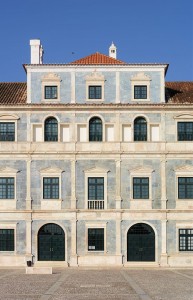The area of Vila Viçosa has been inhabited since Antiquity, and it was the site of a small settlement in Roman times. The region was part of the Visigoth Kingdom and in the eighth century came under Moorish control after the Muslim conquest of Hispania. Moorish domination ended in 1217, when the region was reconquered by the Order of Aviz, a military order of knighthood that reclaimed large parts of Southern Portugal to the Christians. The order promoted the settlement of Christians in the area during the 13th century. In 1270, King Afonso III granted a foral(letter of feudal rights) to the incipient village of Vila Viçosa. In the early 14th century, King Dinis I built a castle in the village, to protect it from potential Castilian incursions.
In 1461, Vila Viçosa came to the hands of the House of Braganza, one of the most important houses of nobility of Portugal. This event was crucial in the history of the village, which became the main base of the Dukes of Braganza in the next centuries. The Dukes had considerable wealth and greatly promoted the economic, urban and artistic development of the village.
In 1502 the building of the Ducal Palace of Vila Viçosa was begun, sponsored by Jaime, fourth Duke of Braganza. Jaime was a skilled military leader who later led the Portuguese to victory against a Moorish army in the Battle of Azamor, in Morocco. The Ducal Palace was greatly remodelled between the 16th and 17th centuries in a sober late Renaissance(Mannerist) style, and was decorated through the centuries by several artists. The Dukes also sponsored artistic campaigns in several churches and monasteries in the village.
When Duke John became King John IV, in 1640, the House of Braganza moved to the capital Lisbon, and many of the riches of the Ducal Palace were transferred to the Ribeira Palace. Vila Viçosa became a vacation spot for the members of the Braganza family. This marks the beginning of a period of decay for Vila Viçosa.
The Lisbon Earthquake of 1755
In 1755, Vila Viçosa was badly shaken by the earthquake of 1755. In the early nineteenth century, Vila Viçosa was looted during the Napoleonic wars.
The Republic of 1910
With the proclamation of the Republic on 5 October 1910, Vila Viçosa fell into decay due to the objective of Republicans to erase all traces of the monarchy. However, in the 1930s, with the exploitation of marble (Marble Estremoz) and opening of Vila Viçosa Ducal Palace for tourism, Vila Viçosa began to change until the present day. Today, as with many Alentejo cities, its population is decreasing, whose principal factor is the emigration to other regions of Portugal or abroad.




Comments are closed.